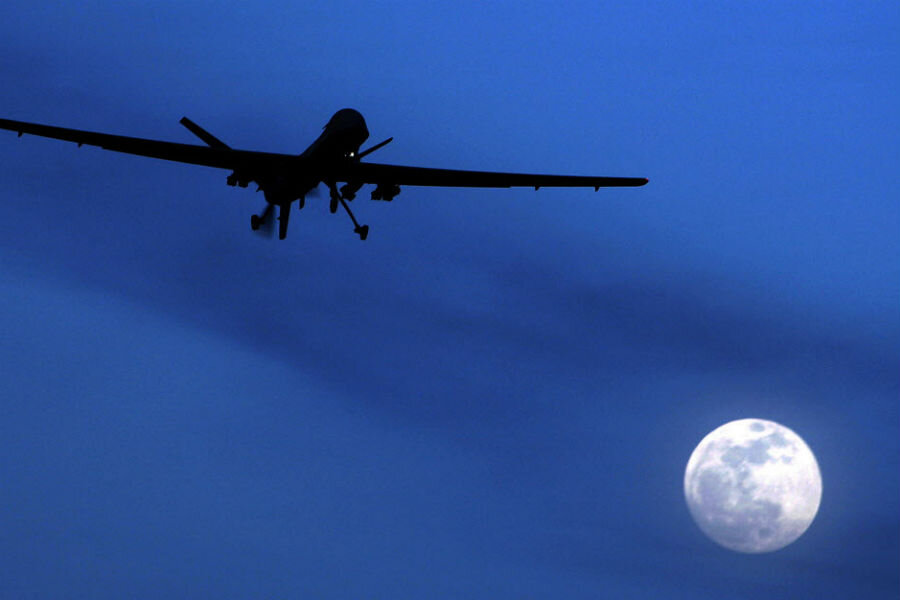ACLU lawsuit prompts White House to release drone policy playbook
Loading...
For the first time, the United States released its “playbook” for using drones to kill terrorists abroad. The documents were made public on August 5, a summer Friday afternoon, in response to an American Civil Liberties Union lawsuit.
The 18-page policy was adopted by the administration in 2013, but were not published even though Obama at the time pledged greater transparency. According to Reuters, the policies allow for strikes against high-value terrorist targets "when there is near certainty" that the person is present, and that no civilians will be injured or killed, and is necessary to "achieve U.S. policy objectives.”
“[By releasing the policies,] I think they’re trying to correct the perception that Obama is the judge, jury and executioner,” says Sarah Kreps, associate professor at Government at Cornell University and author of "Drones: What Everyone Needs to Know."
In spite of the apparent reluctance to have it see the harsh light of day, the public release of the drone policy can serve the purpose of potentially limiting the action of future administrations and those by other countries.
“I think what they’re trying to do is create a precedent that other countries would follow if they would use drones down the line. I think he’s also trying to box in his successor a bit, as to what policies a President Clinton or President Trump would have to be consistent with,” Dr. Kreps tells The Christian Science Monitor.
In an earlier step towards greater transparency, the White House for the first time released data on civilian deaths from its drone program, reporting on July 1 that as many as 116 civilians had been killed in drone strikes since Obama took office, in 473 strikes that killed between 2,372 and 2,581 militants in Pakistan, Yemen, and Africa.
But human rights groups claim this is a significant undercounting of true civilian deaths. The London-based Bureau of Investigative Journalism, for instance, has estimated that anywhere from 492 to about 1,100 civilians have been killed by drone strikes in Pakistan, Yemen, and Somalia since 2002.
The administration has staunchly defended its drone policies. "Our counter-terrorism actions are effective and legal, and their legitimacy is best demonstrated by making public more information about these actions as well as setting clear standards for other nations to follow," National Security Council spokesman Ned Price said on Saturday, as Reuters reported.
However, critics maintain that the very existence of a program that targets specific people for assassination is in itself a problem.
“In a way it doesn’t make much difference that they might lay out their internal criteria for targeted killing. It’s the fact that they’re targeted killing is the issue, which potentially sets a norm in international practice which we wouldn’t like to be practiced on us,” Neta Crawford, professor of political science at Boston University, tells the Monitor.
The 2013 playbook marks an evolution in the use of drones by the United States. The groundwork for the program was laid in the 2001 Authorization for the Use of Military Force Congress passed in the days following 9/11, which empowers the president "to use all necessary and appropriate force" in pursuit of those responsible for the terrorist attacks. The international legal justification is the US’s right to self defense, under Article 51 of the UN Charter.
Dr. Kreps says the playbook might be “too little too late” in terms of setting an example of drone transparency for the rest of the world.
“I think what other countries are likely to base their own decisions on is how they perceive US behavior in early episodes – up until really 2012 where it seems like the Wild West when it came to some of these targeted decisions – rather than the more recent playbook which I think is intended to make it seem like it’s a much more rigorous process intended to minimize casualties.”
How much influence the US has over other countries remains unclear. “It is easy to overstate the role of the US. That being said, I think that the United States has a very rigorous policy for when it conducts all armed strikes, including drones. I think one of the roles the United States can play is being a role model and trying to set norms for the rest of the world that involve following best practices and ensuring all strikes are conducted in ways that are consistent with international law,” says Michael Horowitz, associate professor of political science at the University of Pennsylvania.
“There’s a lot of concern within the international community that the lack of transparency from the United States concerning drone strikes could spill over and influence how other countries use drones. There’s just not a lot of evidence at this point to let us know whether that’s happening. I think, the US, as the most powerful country in the world and the country with the most extensive experience in using drones, can certainly play a positive role setting good norms and standards," Horowitz says. "I think more transparency can actually increase confidence that the US conducts drone strikes in accordance with international law.”






